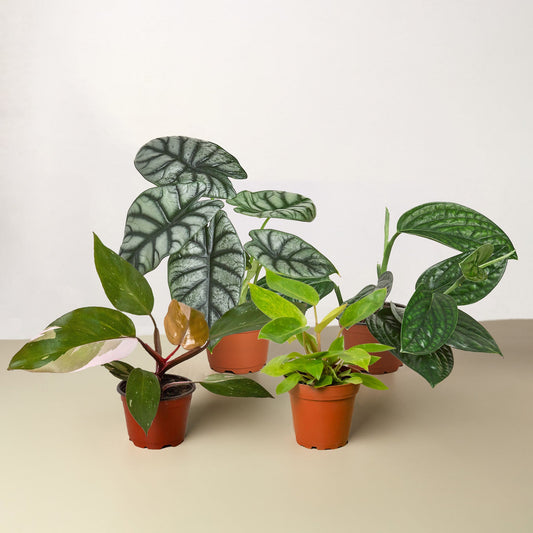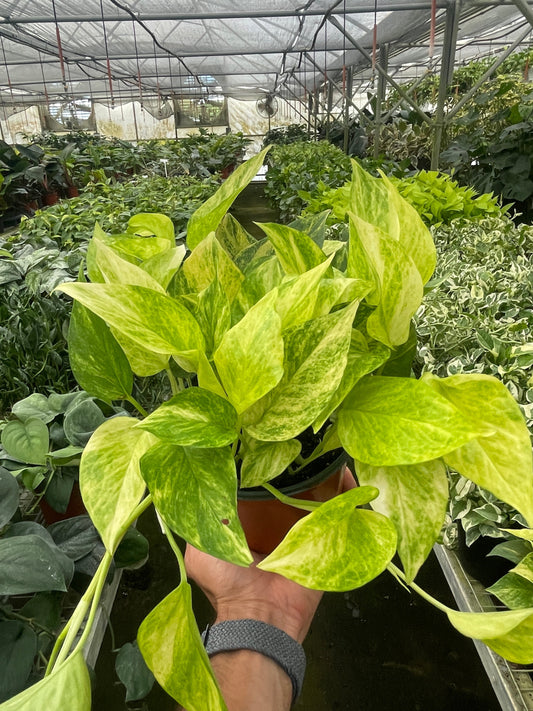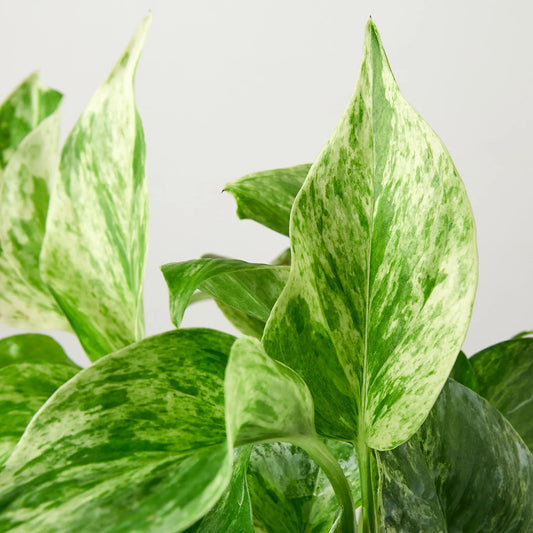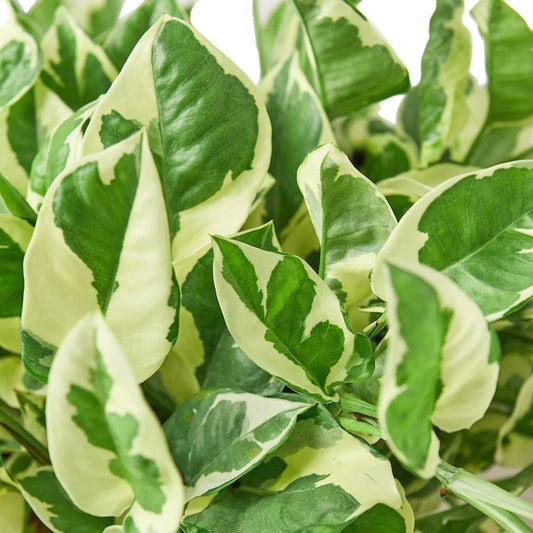Monstera Adansonii Aerial Roots: Everything You Need to Know
Cafe Planta Team
If you’ve ever admired the stunning Monstera Adansonii, you might have noticed its unique aerial roots. These roots, which seem to sprout freely from the plant's stems, add to its character and charm. But what are they for, and how can they affect your plant's health and growth?
In this article, we’ll break down everything you need to know about Monstera Adansonii aerial roots. From their purpose and care to creative ways to incorporate them into your home decor, you'll be equipped with all the information you need to become a confident Monstera parent.
Understanding Aerial Roots
Aerial roots are quite fascinating — they’re not your typical roots that dig deep into the soil. Instead, these roots grow above ground and serve multiple purposes. For Monstera Adansonii, aerial roots help the plant in a few distinct ways.
Firstly, they provide additional support. In the wild, Monstera plants use these roots to climb trees and other surfaces, reaching for sunlight. Imagine them as nature's built-in climbing gear! Secondly, they absorb moisture and nutrients from the air, which can be particularly helpful in humid environments.
While they might seem purely decorative in a home setting, these roots are an important part of the plant's health. If you’ve ever wondered why your Monstera has sprouted these quirky roots, now you know — they’re a natural feature, not a sign of distress or a need for immediate action.
How to Care for Aerial Roots
Now that you know what aerial roots do, let’s talk about how to care for them. Luckily, these roots don’t require much maintenance. They’re quite self-sufficient, but there are some things you can do to keep them healthy and happy.
First and foremost, ensure your Monstera is in a humid environment. These plants thrive in higher humidity, which not only benefits the aerial roots but also the entire plant. If your home is on the dry side, consider using a humidifier or placing a tray of water near the plant to increase the moisture in the air.
Another tip is to mist the aerial roots occasionally. This can help them absorb the moisture they need. However, be cautious not to overdo it, as too much water can lead to root rot.
Lastly, avoid trimming the aerial roots unless they’re in the way or causing damage to something in your home. They’re generally harmless and contribute to the plant's overall health and stability.
Encouraging Growth with Aerial Roots
Did you know you can use aerial roots to encourage your Monstera Adansonii to grow bigger and stronger? It’s true! By providing a structure for them to climb, you can mimic their natural environment and promote healthy growth.
A moss pole or trellis is perfect for this. Simply place the support near your plant and gently guide the aerial roots towards it. Over time, the roots will naturally latch on, giving your Monstera the support it needs to grow upwards and outwards.
This not only benefits the plant but also creates a stunning display in your home. A well-supported Monstera can become a focal point in any room, adding a touch of nature and elegance to your space.
Incorporating Aerial Roots into Home Decor
Let’s face it — Monstera aerial roots can be a bit unruly. But instead of seeing them as a nuisance, why not embrace them as a unique decor element? Here are a few creative ways to incorporate these roots into your home’s aesthetic.
Consider using them in a hanging display. Since Monstera Adansonii is a natural climber, hanging the plant allows the roots to dangle freely, creating an interesting and organic look. Plus, it keeps them out of reach of pets and small children.
If you’re feeling crafty, you can wrap the aerial roots around decorative elements, like a driftwood branch or a metal hoop. This not only supports the roots but also adds a personalized touch to your decor.
Remember, these roots are a natural part of the plant, so don’t be afraid to get creative. With a little imagination, they can become a beautiful and unique feature in your home.
Common Issues with Aerial Roots
While Monstera Adansonii aerial roots are generally low-maintenance, they can sometimes encounter problems. Here's a look at some common issues and how to address them.
One issue is root rot, which occurs when the roots are exposed to too much moisture. If you notice that the roots are soft or discolored, it might be time to cut back on watering and ensure proper drainage.
Another potential problem is damage from pets or pests. Curious cats or dogs might find aerial roots appealing, so keep an eye out for any signs of chewing or nibbling. If pests are the issue, consider using natural repellents or consulting with a plant expert for advice.
Lastly, if your aerial roots seem to be drying out, it could be a sign that your home is too dry. Increasing humidity or misting the roots more frequently can help resolve this issue.
Repotting with Aerial Roots
Repotting a Monstera Adansonii with aerial roots can seem a bit tricky, but it doesn’t have to be! With a few easy steps, you can repot your plant without damaging these important structures.
Start by choosing a pot that’s slightly larger than the current one. This gives the roots room to grow without overwhelming the plant. When removing the plant from its old pot, handle the aerial roots gently to avoid breakage.
When placing your Monstera in the new pot, make sure the aerial roots have space to breathe. You might need to adjust them so they’re not trapped under the soil.
Finally, water the plant thoroughly and place it back in its usual spot. With the new space and proper care, your Monstera will continue to thrive.
Propagating Monstera Adansonii with Aerial Roots
Looking to expand your plant collection? You can use aerial roots for propagation! This method is not only effective but also a great way to share your love of plants with friends and family.
To propagate using aerial roots, start by identifying a healthy section of the plant with one or more aerial roots attached. Cut below the roots, ensuring you have a few inches of stem to work with.
Place the cutting in water, ensuring the aerial roots are submerged. After a few weeks, you should notice new roots forming. Once they’re a few inches long, you can transfer the cutting to soil.
Keep the new plant in a warm, humid environment and continue to care for it as you would the parent plant. Before you know it, you’ll have a new Monstera Adansonii to enjoy!
Using Aerial Roots for Stability
In addition to being a charming feature, aerial roots can provide your Monstera with extra stability. If you notice your plant leaning or struggling to stay upright, these roots can be part of the solution.
Guide the aerial roots towards a support structure, like a trellis or stake. As they attach, they’ll help anchor the plant, giving it the support it needs to stand tall.
This is especially helpful for larger Monstera plants, which can become top-heavy as they grow. By utilizing the natural strength of aerial roots, you can ensure your plant remains stable and healthy.
Final Thoughts
Monstera Adansonii's aerial roots are more than just an interesting feature — they’re an essential part of the plant's health and growth. By understanding their purpose and how to care for them, you can help your Monstera thrive and add a touch of nature to your home.
Here at Cafe Planta, we’re passionate about helping you care for your plants. Whether you’re a seasoned plant parent or just starting out, we’re here to support you. If you have questions or need advice, feel free to email us or reach out on Instagram. We’d love to help you on your plant journey!



















